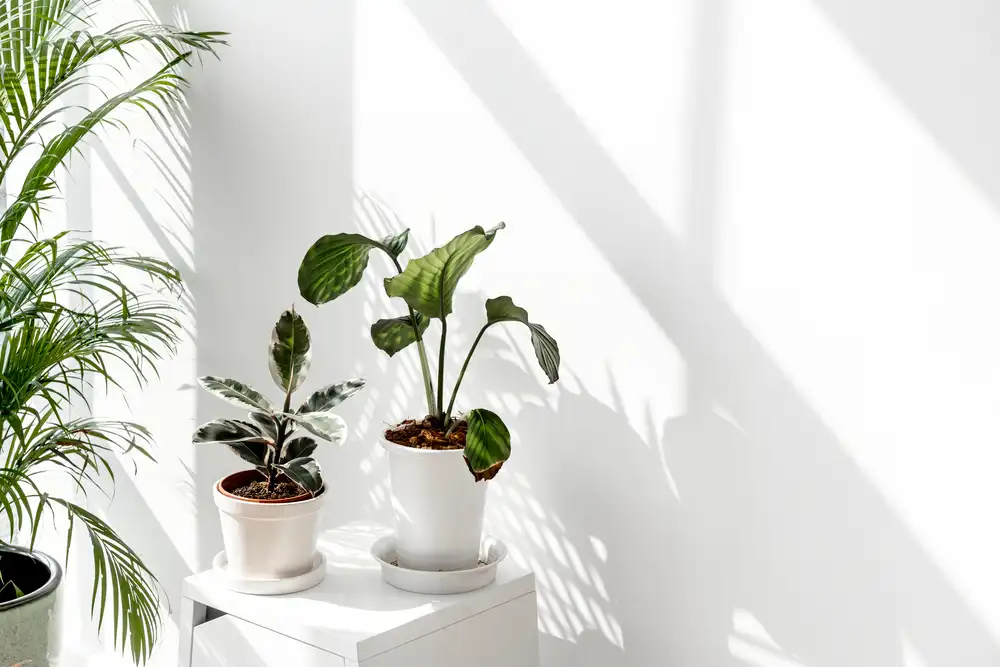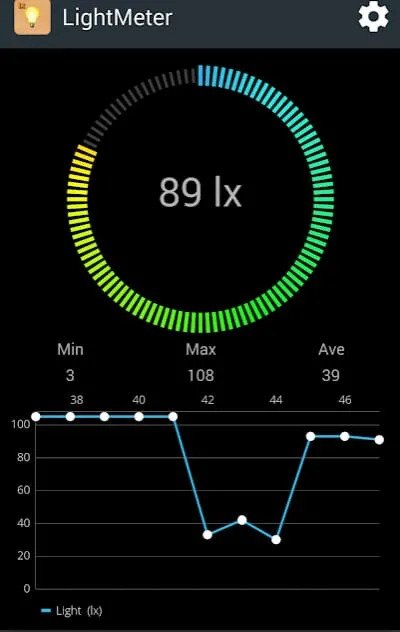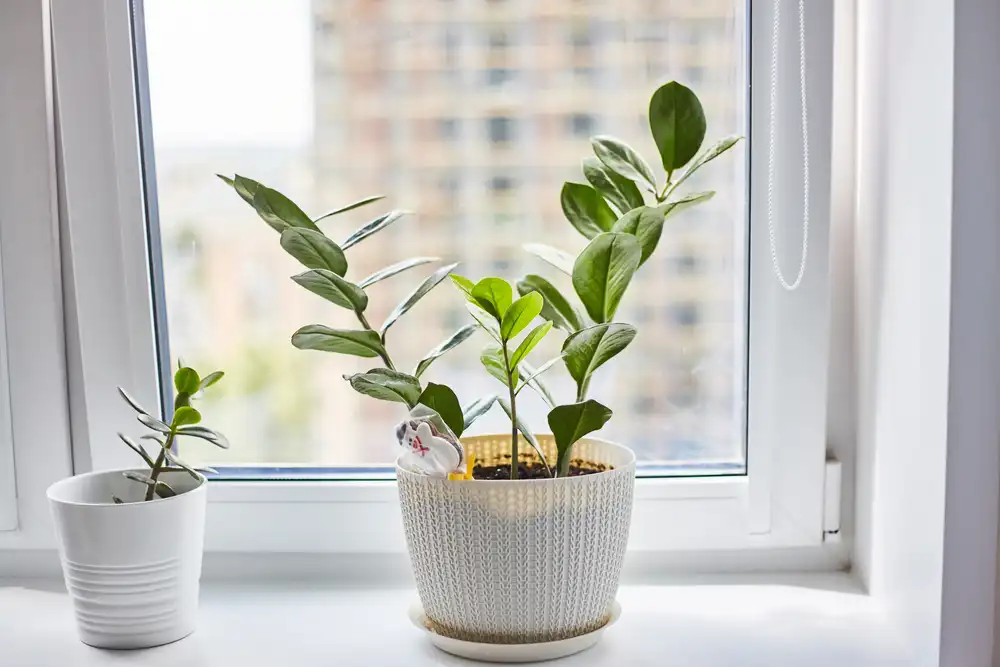I always bang on about the importance of light to plants, but how do you actually measure light for houseplants?
How can you be sure that the space you are putting your houseplant has enough light for it?
Our eyes are wonderful instruments, but they are sometimes too good. They will compensate for variations in light levels. For example, if you go from outdoors to indoors, which is a huge difference in light intensity, your eyes will adjust pretty quickly and you’ll hardly notice.
If you spend all day indoors, you’ll probably think it’s actually quite bright when in fact it’s a very low light level.
Artificial lighting doesn’t help with the distinction between true light and dark spaces.
So, we can’t really rely on our eyes to judge how light a room is.
What do we do?
How To Measure Light For Houseplants
You might hear a few people recommending the ‘shadow test’ where you determine how defined a shadow being cast in a particular space is. The sharper the shadow, the greater the light level.

Let’s be honest, that isn’t going to cut the mustard, you’re still going to be left wondering if it’s really light enough.
We’re going to go through two methods that give you definitive answers to how much light your houseplants can expect in a given location.
Both of these methods measure light in ‘foot candles’ which is what is most commonly used in the houseplant world. Basically, 1 foot candle (FC) is equivalent to the light you get 1 foot away from a candle.
As a general rule, you are looking for locations that have at least 200 FC of light. Some plants will survive below this, but they won’t be happy.
Some plants will need more than this, but you’re going to find a range of light levels in your home unless you have no windows, so you should find even higher readings in certain locations.
If you have a location that gets 1000+ FC of light then it’ll be a spot where houseplants will thrive!
As you take readings, it is really useful to make a note of them for each location as well as how much direct sunlight that location will get.
It is best to take your readings at midday on a bright, but not sunny day. If you take readings of direct sun it will give you crazy-high numbers which will not be representative of an average day.
The Smartphone Apps
The cheapest and easiest method is to use an app on your phone. You will be able to install one within seconds and, for the purposes of measuring light levels in your home, they are free.
These apps use the digital optics of your phone’s camera to determine light levels. This isn’t the most accurate way of measuring light so they are not going to give you the most accurate measurements. But in the most part, it will be enough for you to make some decisions on where to place your houseplants.
On the iPhone, the best app to use is Lux Light Meter Pro. It has a really simple interface and seems to give pretty good results (in comparison to my dedicated light meter which we will talk about later).
There are a couple of things to note about how to use this app.
- Open the app up and select ‘FC’ in the middle of the screen, ‘Back’ at the bottom left of the screen and ‘Outdoor’ at the bottom right. I know you’re indoors but, after testing, this is what gives more accurate results.
- Hold your phone in the location you want to put a houseplant, with the camera facing the nearest source of light.
- Press the sun symbol and a reading of foot candles will appear.

If you have an Android phone, then Lux Meter is your best option.

The Dedicated Light Meter
I started off using the iPhone light meter to measure light for my houseplants and it did the job for a while, but I just had that nagging feeling in the back of my head that I needed more accuracy.

I went ahead and bought a dedicated light meter. Actually, they are not very expensive. The ones I recommend are in the range of £30-40 ($35-45).
Investing in the wellbeing of your plants will pay you back in the long run. Whether it is improving your health, making your home look great, giving you a rewarding passion hobby or even increasing the value of your plants as they grow!
I have the Urceri light meter [US link, UK link], but other people I know have the Dr Meter light meter [US Link, UK Link]. There doesn’t seem to be much difference between them.
Both of these have sensors that are separate to the meter which makes it a lot easier to take readings while looking at the screen.
Here’s how to do it for the Urceri:
- Take the cap off the sensor (rookie mistake alert!).
- Press the ‘FC’ button.
- Hold the sensor in the location you want to put a houseplant, with the white dome facing the nearest source of light.
- Look at the range at the top of the screen. This changes as the light levels increase or decrease, so you need to know what range the measurement is in.
- The reading in the middle of the screen will be in the range shown, so you need to read to the two together. For example, in the image below, the range is 400-4,000 and the reading is 350 so …
Once again, note all your readings down.
What Do You Do With All These Light Meter Readings?
Now you have a really good understanding of the light levels in your home.
You’ve done all the hard work.
Now, you can use these readings and your notes to choose your plants for certain locations.

There are plants that can tolerate low light levels, but it’s not ideal. I break houseplants up into two categories:
A. Plants that need bright light.
B. Plants that need very bright light.
The top category will be fine in 200 FC of light but will do well in conditions over 400 FC.
The bottom category will be fine in 400 FC of light but will do well in conditions over 800 FC.
Plants are very adaptable, which is why I can make these broad categories. It also makes becoming a good houseplant parent a lot easier if you don’t have to keep checking light conditions and what a specific plant needs.
Just categorise each location as an A or a B and place plants that fit into those categories in the right location!
Here is a table of the most common houseplants and which category they fit into to help you out and you can find a table of the number of hours of direct sun these plants will tolerate at the bottom of my article on how much light houseplants need:
| Houseplant | Light Category |
| African Violets | A |
| Air Plants | A |
| Alocasia (Elephants Ear) | A |
| Aspidistra (Cast-Iron Plant) | A |
| Areca Palm | A |
| Begonia | A |
| Bird-Of-Paradise | B |
| Calathea | A |
| Croton | B |
| Dracaena | A |
| English Ivy | A |
| Hoya | A |
| Ferns | A |
| Ficus (Rubber Plant, Fiddle Leaf Fig) | B |
| Maranta (Prayer Plant) | A |
| Monstera Deliciosa | A |
| Norfolk Island Pine | A |
| Parlour Palm | A |
| Peace Lily | A |
| Peperomia | A |
| Pilea Peperomioides | A |
| Pothos | A |
| Sansevieria (Snake Plant) | A |
| Spider Plant | A |
| Succulents | B |
| Yucca | B |
| ZZ Plant | A |
